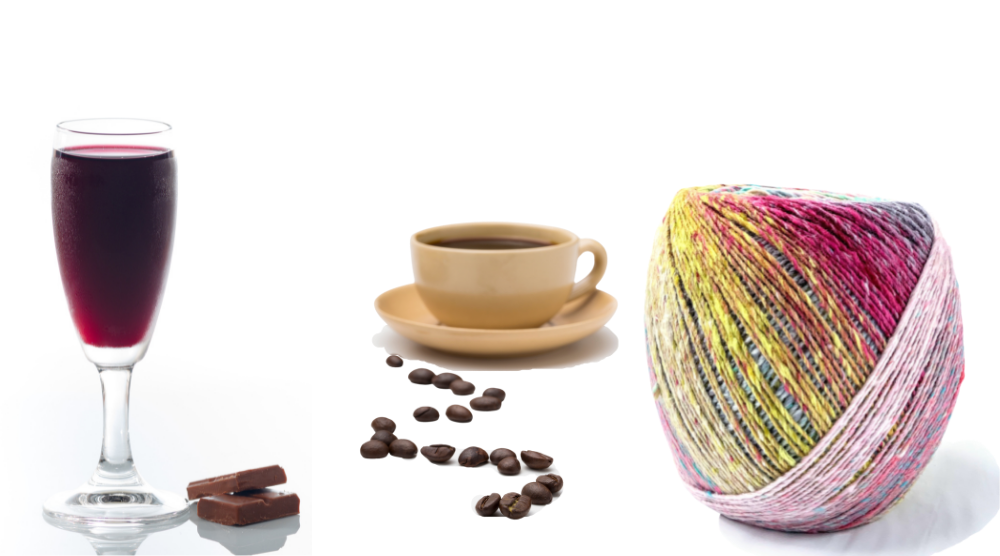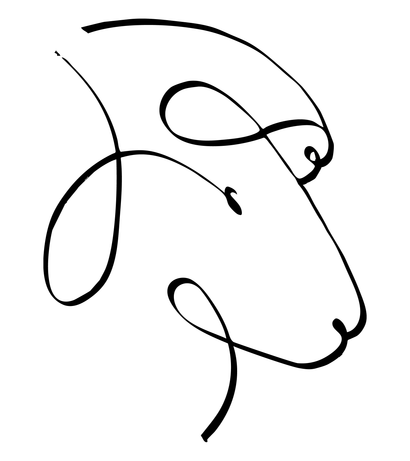Free shipping on all domestic orders over $150
Free shipping on all domestic orders over $150
Shop
Add description, images, menus and links to your mega menu
A column with no settings can be used as a spacer
Link to your collections, sales and even external links
Add up to five columns
Add description, images, menus and links to your mega menu
A column with no settings can be used as a spacer
Link to your collections, sales and even external links
Add up to five columns

Yarn - a blending of fibers
December 13, 2021 3 min read
Here’s a riddle for you. What do chocolate, coffee, and wine have in common with yarn?
If your first thought is that they are all essential elements to happiness in life, come sit with me because we’re going to be BFFs. However, the answer to my riddle is less fun and a bit more objective: All four of these products are often blended. Makers of wine, chocolate, coffee, and yarn all understand that blending different varieties gives them more control over the final product and allows them to create beautifully balanced, consistent products and offer precise characteristics to suit particular tastes and needs.
The concept behind a blended yarn is both functional and aesthetic. Every fiber has its own set of properties - softness, strength, elasticity, and shine, but no fiber has it all. As my friend Gordon is fond of saying, “You can have anything you want, but you can’t have everything you want.” He is right, of course, unless you blend fibers to get everything you want. For example, alpaca fiber is like a newborn kitten– deliciously warm and soft, but fragile and not so bouncy. Pair it with wool, that most elastic of fibers, and you have a wonderful sturdy and springy yarn with a cozy soft hand. Rowan Alpaca Soft DK is a prime example. Wool brings its magic to cotton, silk, and other plant-based fibers as well, enhancing their elasticity and making them much nicer to work. Sometimes fibers are added to produce a more durable and structured yarn. For instance, nylon or polyamide is usually blended into fingering weight wool to create long-wearing sock yarns. These are some of the functional reasons to blend fibers.
Sometimes fiber blends are purely aesthetic, and I must say, no one does this kind of blending better than Noro. Check out most Noro labels and you’ll typically find at least three, and usually six or more fibers listed. These are the most conscious and interesting blends on the market. Consider the luxurious poofs of angora rising in a halo above a velvety cushion of Okunoshima, or a rich twist of luminous mohair and shimmery silk supported by just enough wool in Silk Garden. I could go on and on, but you get the picture.
Even single fiber yarns are blends of the same fiber sourced from different farms, just as grapes from various vineyards compose a Napa Cabernet, or a Bordeaux. Blending of yarn, as with grapes, allows for greater consistency from year to year.
There are a few single-source yarns - they are like vineyard-designated wine which US law says must comprise at least 95% grapes grown on that vineyard.. These yarns harken back to a time when the wool industry was not so worldwide, and each region bred a particular kind of sheep uniquely suited to that environment. A sheepy terroir, for you wine aficionados. Over the years, Rowan has worked with various small sheep farms and wool growers to create these fibers, the most recent of which is Pebble Island, a gorgeous fiber made exclusively from the wool grown by a single flock of sheep in the Falkland Islands. Noro, too, has Haunui, an undyed fiber from a small, family-owned farm in New Zealand. The point of these yarns is that they are completely traceable - you know everything about every spec of the fiber from sheep to sweater. It’s also a testament to the quality of the raw materials and processing that these yarns are so luxurious without any blending or adjusting at all. Very little margin for error here, which is why they tend to be pricey.
Whether blended, or single-source, handknitting yarns are very consciously created with the consumer in mind. Producers work hard to create just the right yarn for every audience, every market, and every maker. The hard part is not getting exactly what you want, but deciding exactly what you want.
I look forward to seeing you soon and helping your decide. Whether in the shop and around the table or online, you are always welcome here.
Warmly,
Ellen
If you like this article, please share it with your friends.

